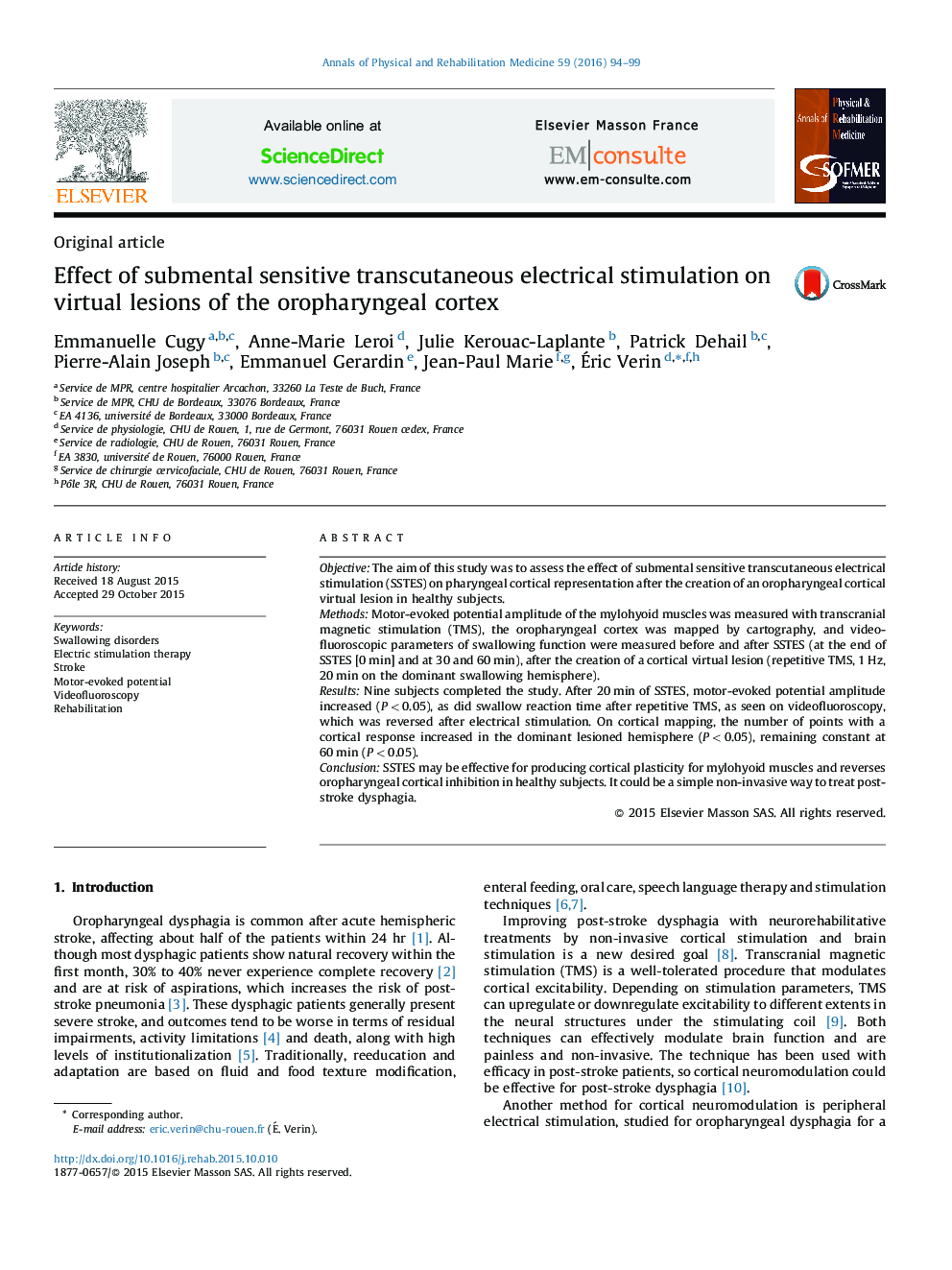| Article ID | Journal | Published Year | Pages | File Type |
|---|---|---|---|---|
| 6204011 | Annals of Physical and Rehabilitation Medicine | 2016 | 6 Pages |
ObjectiveThe aim of this study was to assess the effect of submental sensitive transcutaneous electrical stimulation (SSTES) on pharyngeal cortical representation after the creation of an oropharyngeal cortical virtual lesion in healthy subjects.MethodsMotor-evoked potential amplitude of the mylohyoid muscles was measured with transcranial magnetic stimulation (TMS), the oropharyngeal cortex was mapped by cartography, and videofluoroscopic parameters of swallowing function were measured before and after SSTES (at the end of SSTES [0Â min] and at 30 and 60Â min), after the creation of a cortical virtual lesion (repetitive TMS, 1Â Hz, 20Â min on the dominant swallowing hemisphere).ResultsNine subjects completed the study. After 20Â min of SSTES, motor-evoked potential amplitude increased (PÂ <Â 0.05), as did swallow reaction time after repetitive TMS, as seen on videofluoroscopy, which was reversed after electrical stimulation. On cortical mapping, the number of points with a cortical response increased in the dominant lesioned hemisphere (PÂ <Â 0.05), remaining constant at 60Â min (PÂ <Â 0.05).ConclusionSSTES may be effective for producing cortical plasticity for mylohyoid muscles and reverses oropharyngeal cortical inhibition in healthy subjects. It could be a simple non-invasive way to treat post-stroke dysphagia.
